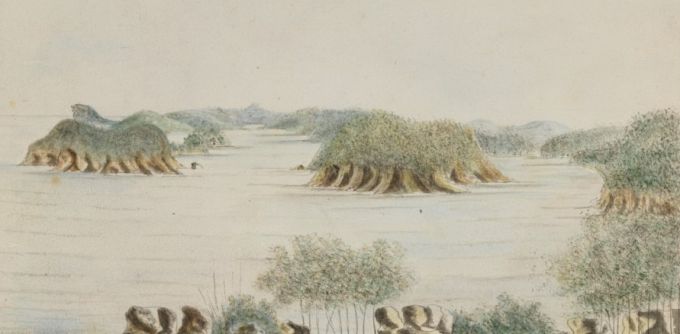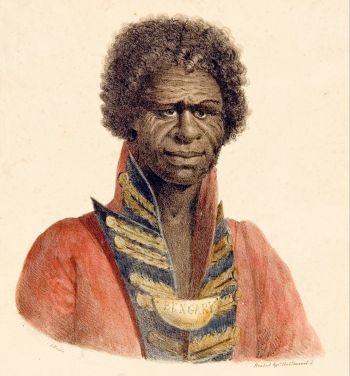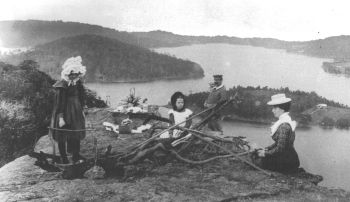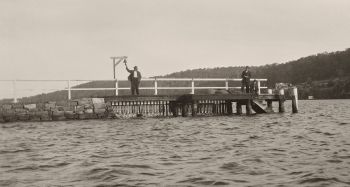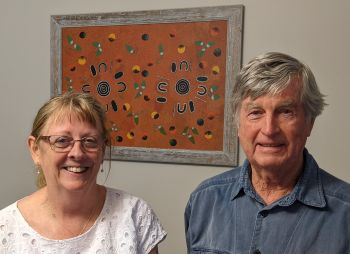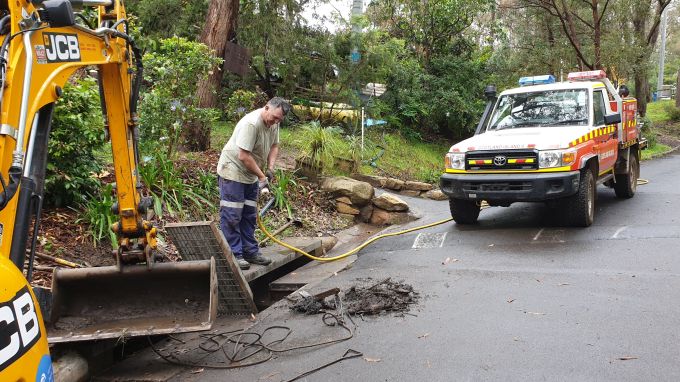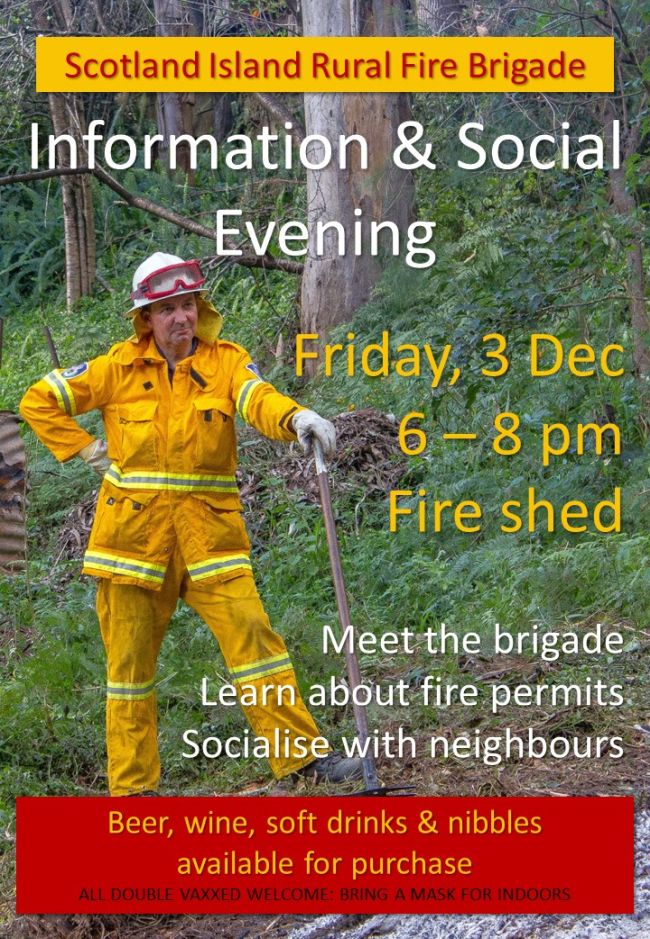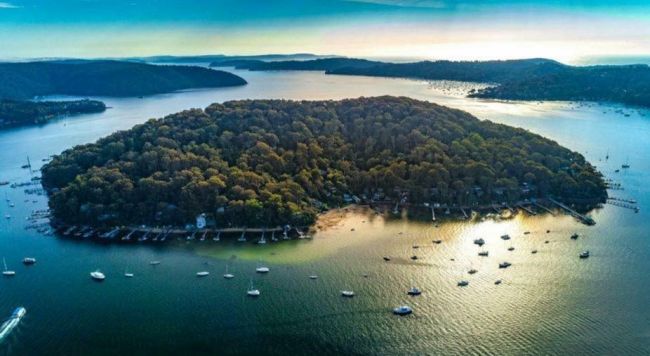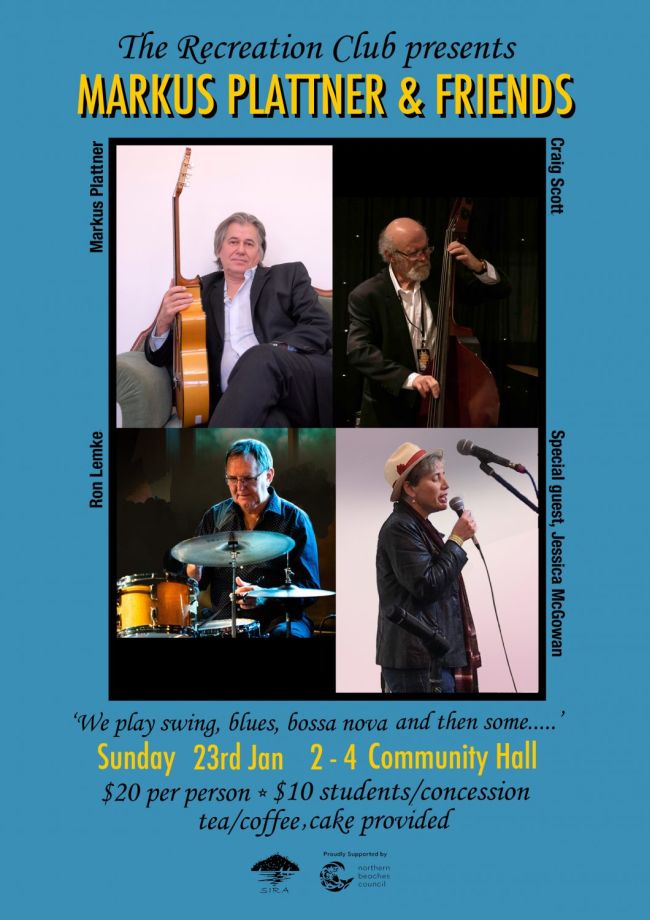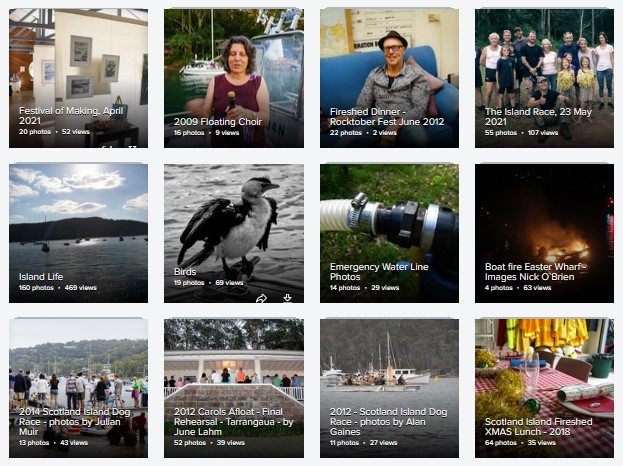| Having trouble reading this newsletter? Visit https://ymlp.com/archive_gesgjgm.php | ||||||||||||||||||
 |
||||||||||||||||||
December 1, 2021 |
||||||||||||||||||
|
Newsletter for the
Offshore Residents of Pittwater, Australia - Volume 22,
Issue 1165
We acknowledge and pay our
respects to the Traditional Custodians of
Pittwater, as well as our indigenous readers
|
||||||||||||||||||
Contents
Scotland Island's European Settlement: a HistoryA talk presented by Scotland Island Recreation ClubRoy Baker
20 November saw the second of two talks on Pittwater history. The first had dealt with the area’s Indigenous past. This time local architect Craig Burton examined European settlement of Scotland Island. Both talks were in preparation for a play, to be performed on the island next year, looking at the lives of Catherine Benns and Catherine Bouffier, two women of local significance. But it was through this second talk, chaired by the indomitable Robyn Iredale, that it became apparent how the lives of these two disparate characters come together.
Catherine Benns was the great-granddaughter of Bungaree. Born in 1775, history has granted Bungaree various monikers. He was described by the early British settlers as ‘Chief of the Broken Bay Tribe’, while others refer to him as the ‘first Australian’, on account of the fact that in 1802 Flinders, accredited with coining the term ‘Australian’, took Bungaree on his voyage around the continent. But our story begins in 1788, when Bungaree was still a boy. That was the year when British forces, under Governor Phillip, first entered Broken Bay. Phillip named its southernmost arm, and the island it contained, after then British Prime Minister, William Pitt. Four years later a teenaged Scottish convict arrived in Sydney. This man, Andrew Thompson, became one of the fledgling colony’s most successful entrepreneurs. Pitt Isle was just a fraction of the land Thompson exploited, developing a salt works and boatyard in what is now Catherine Park. Thompson also built a house for his workers, just above Tennis Court Wharf. Thompson died in 1810. Pitt Isle, by now Scotland Isle, was rented to his former manager while protracted efforts were made to sell it. Precisely what happened next isn’t clear, but within a few years of Thompson’s death the island was being claimed by another Scotsman, John Dickson, who had emigrated to New South Wales in 1813.
The next century saw throngs of migrants reach Australia from Europe. Among them were three men of particular significance to our story. The first two were German, and we shall return to them later. The third, a mariner by the name of Ambrol Josef Diercknecht, was Belgian. Diercknecht became known locally as Joseph Benns, and in 1855 Benns, together with his business partner Charles Jenkins, rented Scotland Island off the Dickson family, with Benns rebuilding the house left by Thompson. It is at this point that Bungaree re-enters the scene. By the time Benns appeared in Pittwater, Bungaree had been dead some 20 years. But in 1874 Benns married Catherine, Bungaree’s great-granddaughter. Catherine, who already had a 12-year-old girl named Emily, moved into Benns’ house on Scotland Island. Emily went on to marry George Godbold in 1887 and they had seven children, all of whom lived with the Benns.
By 1900 both men were dead, and the island was bought by a third Scotsman, Patrick Taylor, who used it to graze horses. Then in 1905 Mary Helen White, daughter of yet another Scotsman, acquired the island. By now an electric tram connecting Pittwater with Manly had been proposed and in 1906 the island was subdivided into 121 blocks, ready for housing. But the lots didn’t attract the expected demand, with only four selling: Yamba (sold to the Robertson family, who gave their name to the adjoining road), Bangalla and a block next to Bangalla (near Carols Wharf), and Ironbark Cottage on the island’s west. It is now that we return to the two German men mentioned earlier. The first, Christoff Gattenhof, had become a builder on Potts Point and in 1880 his daughter married Frank Bouffier, the son of the second. The daughter’s name was Catherine, and she married her German sweetheart just seven years after Catherine Benns married her Belgian lover.
Around 1920, the year Catherine Benns died, Catherine Bouffier’s daughter, Florence, met and then married Herbert Fitzpatrick, a young housing developer of Irish descent. And this is where the Catherines’ stories come together on Scotland Island. Herbert envisaged an island with some 350 houses, and so he bought the island blocks that had failed to sell in the 1906 subdivision. Herbert and Florence then spent their honeymoon on the island, deciding on names for its various parts. It was Florence’s wish that one of the island’s parks be named after her mother, Catherine Bouffier. She probably didn’t realise that another Catherine had raised a family in a house only metres away.
In so many ways these women bookend a story that encapsulates not just our island's history but that of European Australia more generally. It’s a journey which leads us, both locally and nationally, to where we are today. To hear the granddaughter of Herbert and Florence Fitzpatrick talk about her grandparents, as well as her great-grandmother Catherine Bouffier, click here. Thanks go to David Richards and Shane O’Neill for recording both talks, to Robyn Iredale for organising them, and to Craig Burton for being our guide to local history.  Are Bulka Bags the Answer to Fire Safety? Juliet Holmes à Court
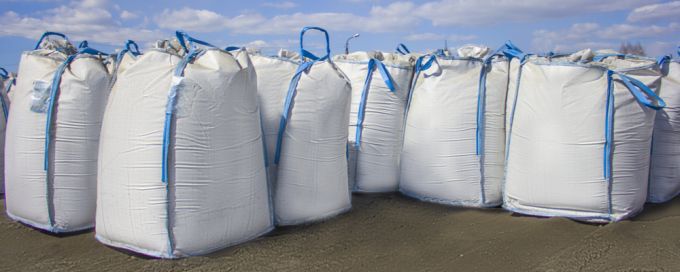 As part of the fine fuel
collection, we have all received a new, single-use Bulka
bag, provided as an aid towards fire preparedness. We
know that they are also used for sand, soil, wood chips,
stone and timber deliveries.
On a recent walk around the island, I started to notice just how many Bulka bags there are. Whilst they are ugly, it's the environmental issue which is of greater concern. Bulka bags are made from polypropylene, aka plastic. They have replaced the hessian sack. Hessian, a once important source of income for both jute growers and weavers in India, has been quashed by large polluting plastic factories, also in India, making Bulka bags. Kimbriki doesn’t recycle them: across Australia only 1% get recycled, despite the label stating 'recyclable'. Many of our bags remain on the island, eventually crumbling in the UV sunshine and adding microplastics to the soil and water runoff. On a back of envelope calculation I have worked out the size of this ever-growing environmental problem for our island. There are about 350 houses on the island. From my observations, there is an average of three bags on each block, excluding the ones recently delivered as part of the fine fuel collection. Flattened out, a Bulka bag covers around 5 sq m. 350 houses x 3 Bulka bags x 5 sq metres gives us an area of 5,250 sq m. That’s about the size of the open, grassy area in Catherine Park. Imagine covering Catherine Park in polypropylene. And every year we add more and more bags. We may need to accept that some building materials have to be delivered this way. But perhaps it’s time to find an alternative to Bulka bags, at least for the fine fuel collection. After all, three more years of fine fuel collection will be enough to add another layer to Catherine Park. Are there alternatives? The Council's green collection doesn't use Bulka bags, just tied bundles. If our garden litter needs to leave the island, couldn't we just put our fine fuel on a reusable tarp or in reusable bins, which are then emptied into a truck? Or, our garden litter could stay here, and we get the council to supply a portable wood mulcher permanently located on the island, paid for with the money saved in transporting the filled bags to Kimbriki? 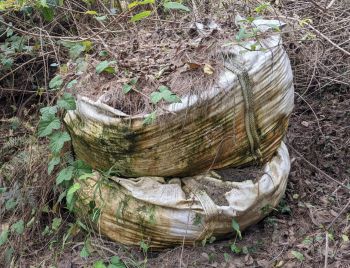 The mulcher, every 8 weeks or so, be moved to a different part of the island. That way we could clear our property for fire readiness, and provide wood chips for the gardeners. A wood chip Bulka bag costs up to $400 delivered from the mainland. The island would be less unsightly. And, more importantly, it would save our island from the pollution caused by hundreds of Bulka bags. 44% of us voted Green in the last election. Perhaps it’s time we started living green, for our island’s sake. Perhaps we could set a trend for greater Sydney. Not only would it be the right thing to do, it would just feel right.  Council Fine Fuel Collection InformationResidents of Scotland Island To help reduce the risk of bushfire, Northern Beaches Council is organising another fine fuel collection. Fine fuel includes leaves, twigs (less than the diameter of your little finger) and bark that can easily catch fire. Other vegetation will not be collected as part of the fine fuel collection. Only Council supplied fine fuel bags will be collected. What do you need to do?
Contractor carrying out the fine fuel collection: Taylor’d Marine Services  For more information: Cass Gye on 0418 220 107, cassgye@spin.net.au Northern Beaches Council: WasteEducation@northernbeaches.nsw.gov.au Bushfire preparation: http://www.rfs.nsw.gov.au Care
for your Drain!
|
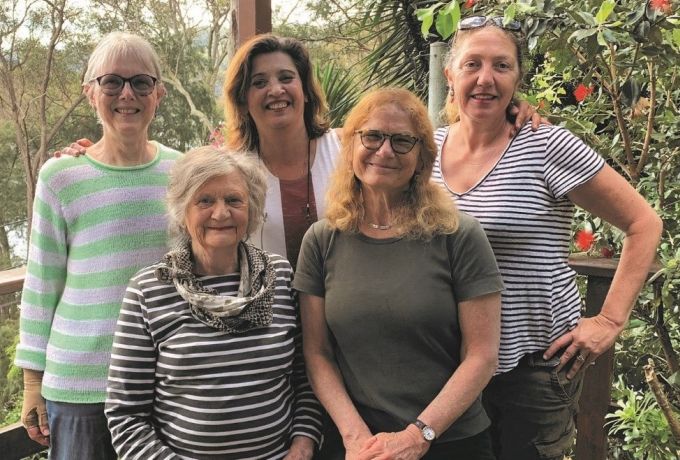 |
| The
production
team, left to right : Jane Morgan and Jane
Rich (assistant editors); Juliette Robertson and CB Floyd (editors) and Jane Matthews, designer |
In a community brimming with artists, writers and photographers, it's no surprise that someone, sooner or later, would think of binding all that talent into a book. And so it was that in 2006 Juliette Robertson and John Hoffman put together the first anthology of works intended to reflect our Pittwater offshore world. The book was highly successful, frequently quoted at dinner parties and remains treasured by offshore and former offshore residents alike.
Now, 15 years later, we have the launch of 'Water Access Only: More Tales & Adventures from Pittwater'. Or, to put it more succinctly, WAO2. There are some changes this time. John Hoffman has been replaced in the editorial team by CB Floyd. WAO2, unlike its predecessor, is printed in colour throughout. And this time the book comes with a barcode that enables you to listen to a Spotify playlist of offshore musicians.
But the basic premise remains the same. WAO2 is a collection of stories, reminiscences, poems, drawings, cartoons, photos, paintings and other artworks, displaying the diverse talents within the offshore community. Contributors come from not only Scotland Island but from every part of the western foreshore, stretching from McCarrs Creek to Mackerel Beach. The mood of the works is equally varied, ranging from sombre through to comical, factual to fanciful. Just about every aspect of offshore life will be found somewhere: boats, buggies, sailing, septic, friendship, solitude, birth, death, bush fires and, of course, car parking.
Juliette and CB were supported by Jane Morgan and Jane Rich as assistant editors, plus Jane Matthews as designer. They deserve our praise. But thanks also go to the 70 or so contributors. All bared their creative souls to the scrutiny of their community. I know from writing the PON that that's not an easy thing to do.
The book contains hundreds of creative works, all for $35. If that's not value enough, there's a bonus. At the end of the book there's a paragraph of biography for each contributor. To a stickybeak like me the book is worth its price for that alone.
WAO2 will be officially launched at noon on Sunday, 5 December, in Scotland Island Recreation Centre. But it is on sale already. Copies can be bought online here, and you can pick up your copy at the launch, or by arrangement. Assuming there are copies left, they can also be bought at the 12 December café. For people not on the island, copies will be stocked in local bookshops and at outlets at Church Point.
'Water
Access Only': Book Launch
Scotland Island Recreation Centre
Sunday 5 December, 12 - 1 pm
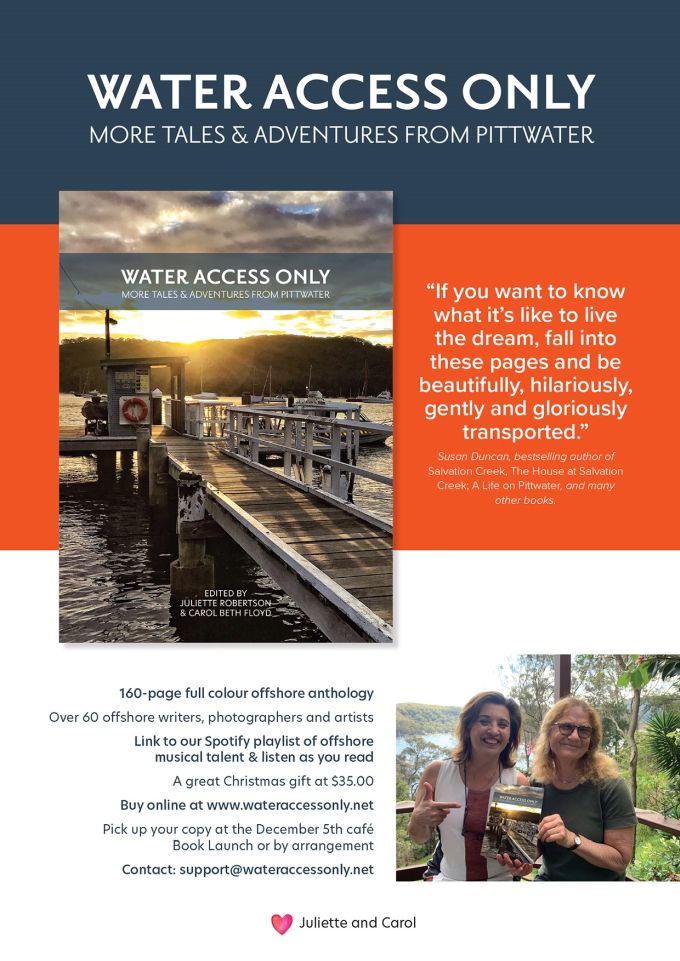
Scotland Island Café
Catherine Park
Sunday 5 December, 10 - 12 noon
Sunday 12 December, 10 - 1 pm
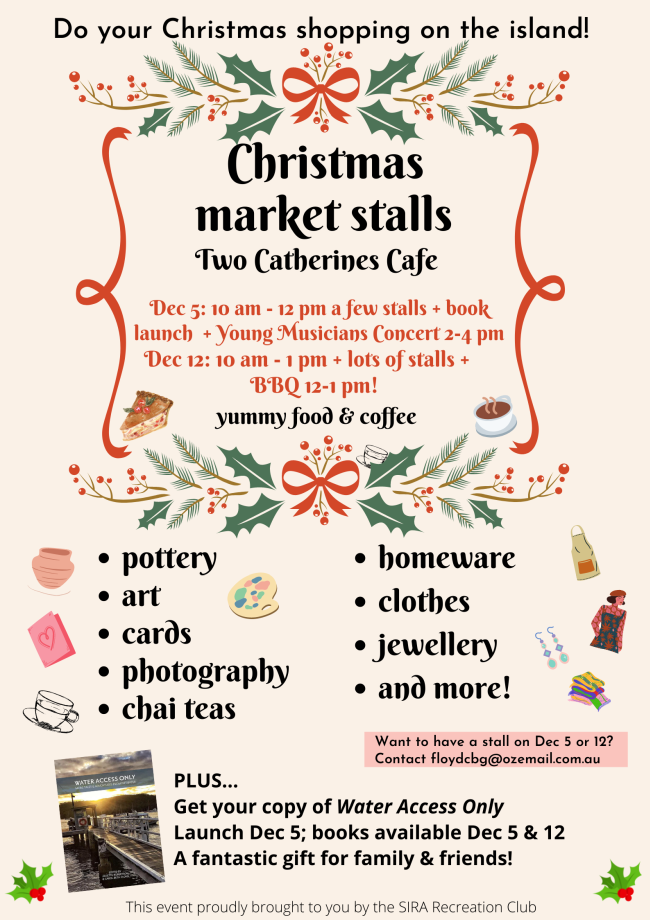

Young
Musicians' Concert
 Scotland
Island Community Hall
Scotland
Island Community Hall
Sunday 5 December, 2 - 4 pm
Family and friends are
invited to enjoy music provided by local young and
young-at-heart performers.
Come and watch your
neighbours, and the children of your neighbours, show
what they can do.
Please bring a plate
to share.

Community Vehicle: Out of Service
Monday 6 December - Thursday 9 December
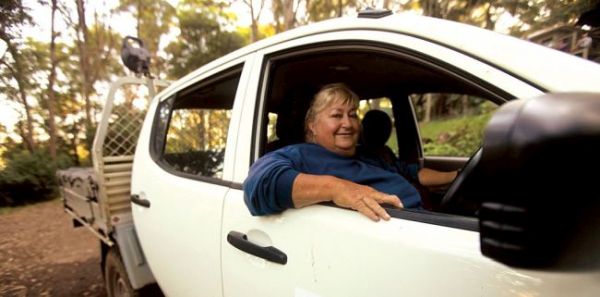
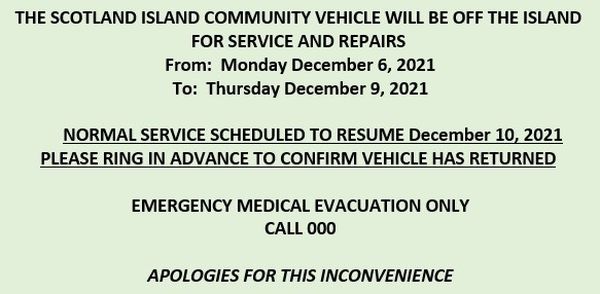

Table Tennis
Scotland Island Community Hall
Most Saturdays, 3 - 5 pm
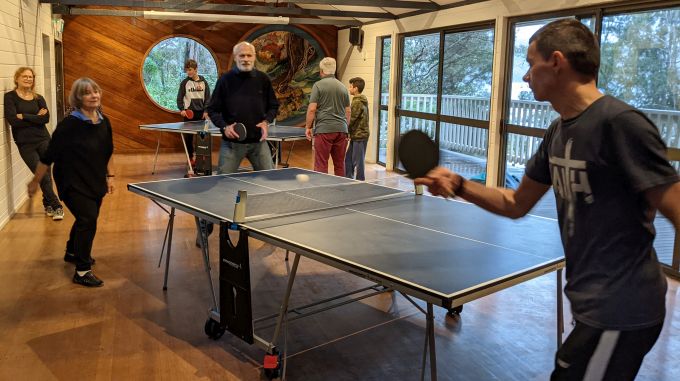
Table tennis sessions have
recommenced. Groups meet most Saturdays. Anyone over 12
is welcome, subject to prevailing COVID rules. Please
bring a mask to wear indoors, although it may be removed
during physical exercise.
If you would like to join a
WhatsApp group for up-to-date information on sessions,
please email editor@scotlandisland.org.au.

Carols
on Pittwater
Thursday, 16 December

Scotland
Island Fire Brigade: Training
Sunday 19 December, 9 - 12 noon
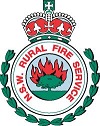
Please register your attendance using the SIRFB website.
COVID protocols will be observed, including the wearing of masks indoors.

Markus Plattner & Friends
Scotland Island Community Hall
Sunday 23 January, 2 - 4 pm

International Folk Dancing
Scotland Island Community Hall
Saturday 29 January, 7 - 9 pm
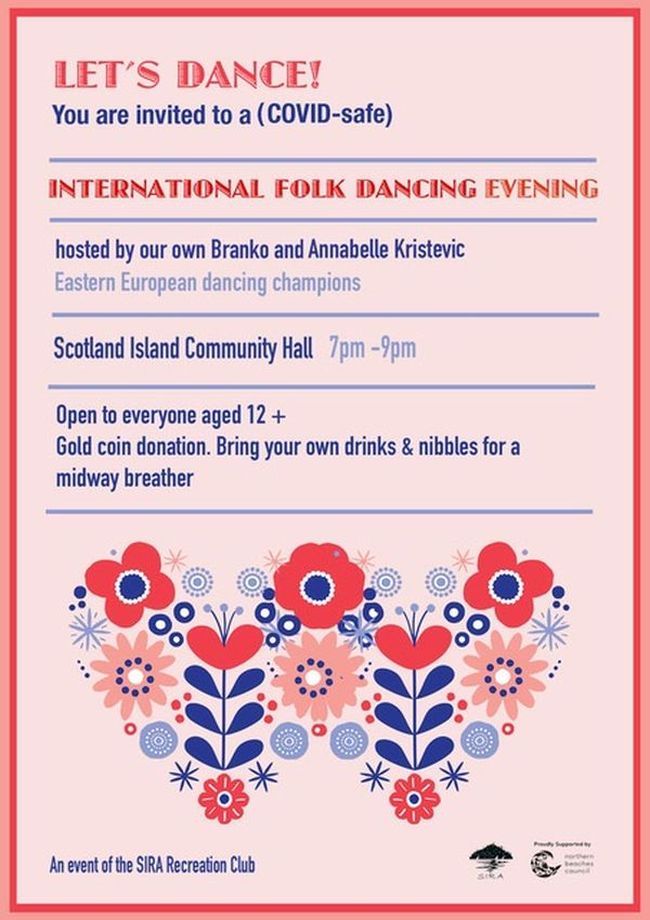

Missed out on a previous newsletter?
Past newsletters,
beginning May 2000, can be found and read at https://ymlp.com/archive_gesgjgm.php.
To Contribute
If you would like to contribute to this newsletter, please send an e-mail to the editor (editor@scotlandisland.org.au).Subscription Information
To subscribe or unsubscribe, go to: http://www.scotlandisland.org.au/signup.Follow the PON
 |
 |
 |
The Online Local Contacts Guide
Click HERE to load
Pittwater Offshore Photo Gallery
Updated
June 2021
Festival of Making,
April 2021
The
views
expressed in this newsletter are not necessarily the
views of the Scotland Island Residents Association
(SIRA), or the Western Pittwater Community
Association (WPCA)

